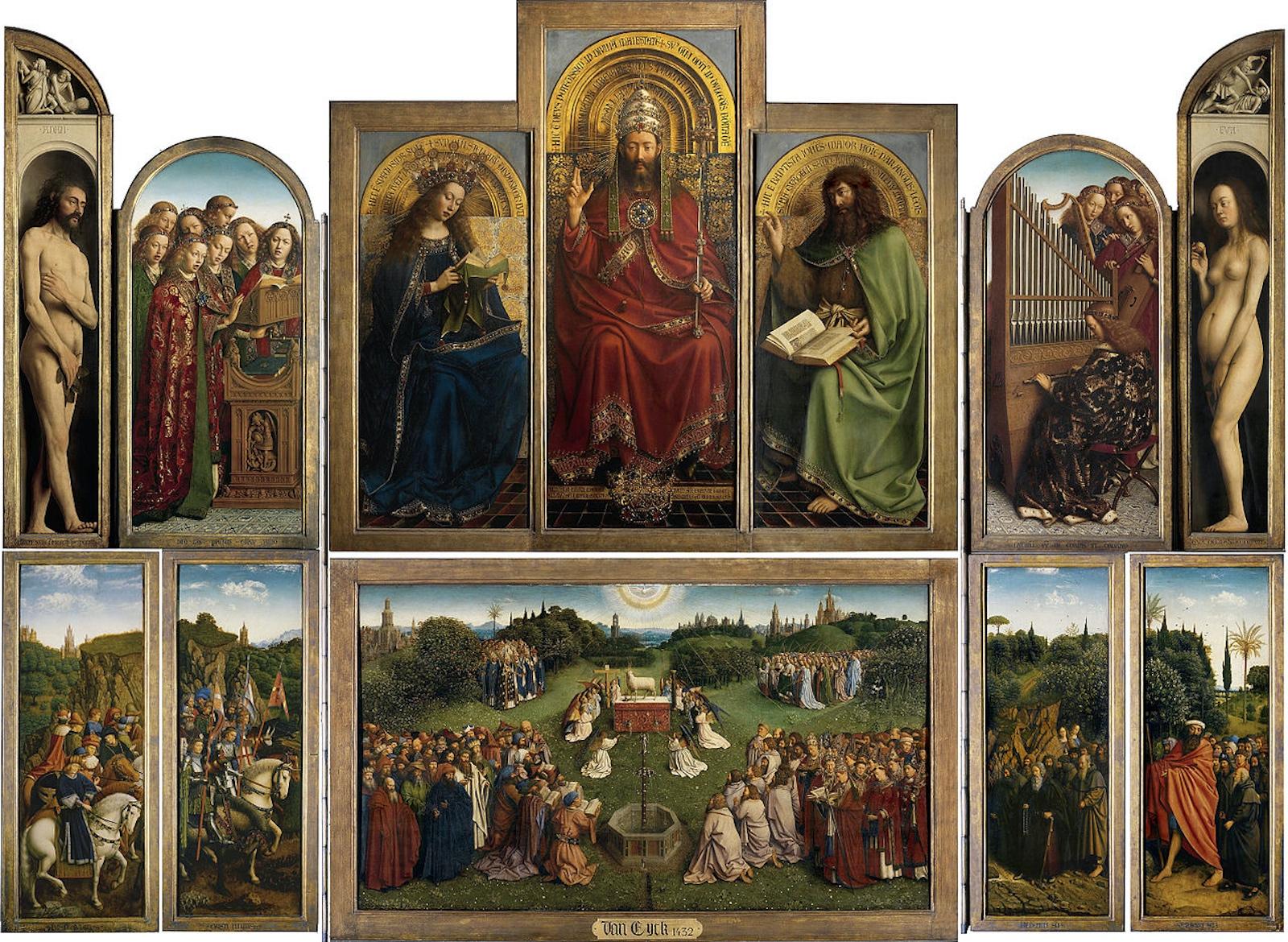Created by Early Flemish painters and brothers Hubert and Jan van Eyck, the altarpiece has such a storied history that its restoration track alone is fascinating. The first was carried out in 1550 after a botched cleaning led to damage along the predella or frame base.
The next major restoration started in 1950 after the altarpiece was recovered from those Austrian salt mines, where it had been stashed for protection during World War II and, unfortunately, sustained significant damage.
This most recent series of restorations began in 2012 and were not completed until 2020. During the restoration process—which was conducted at the Museum of Fine Arts, Ghent by the Royal Institute for Cultural Heritage—panels were taken one at a time to receive work while the rest of the altarpiece remained on display at the cathedral. Museum visitors were able to watch the restoration process as it played out behind a glass screen.






























